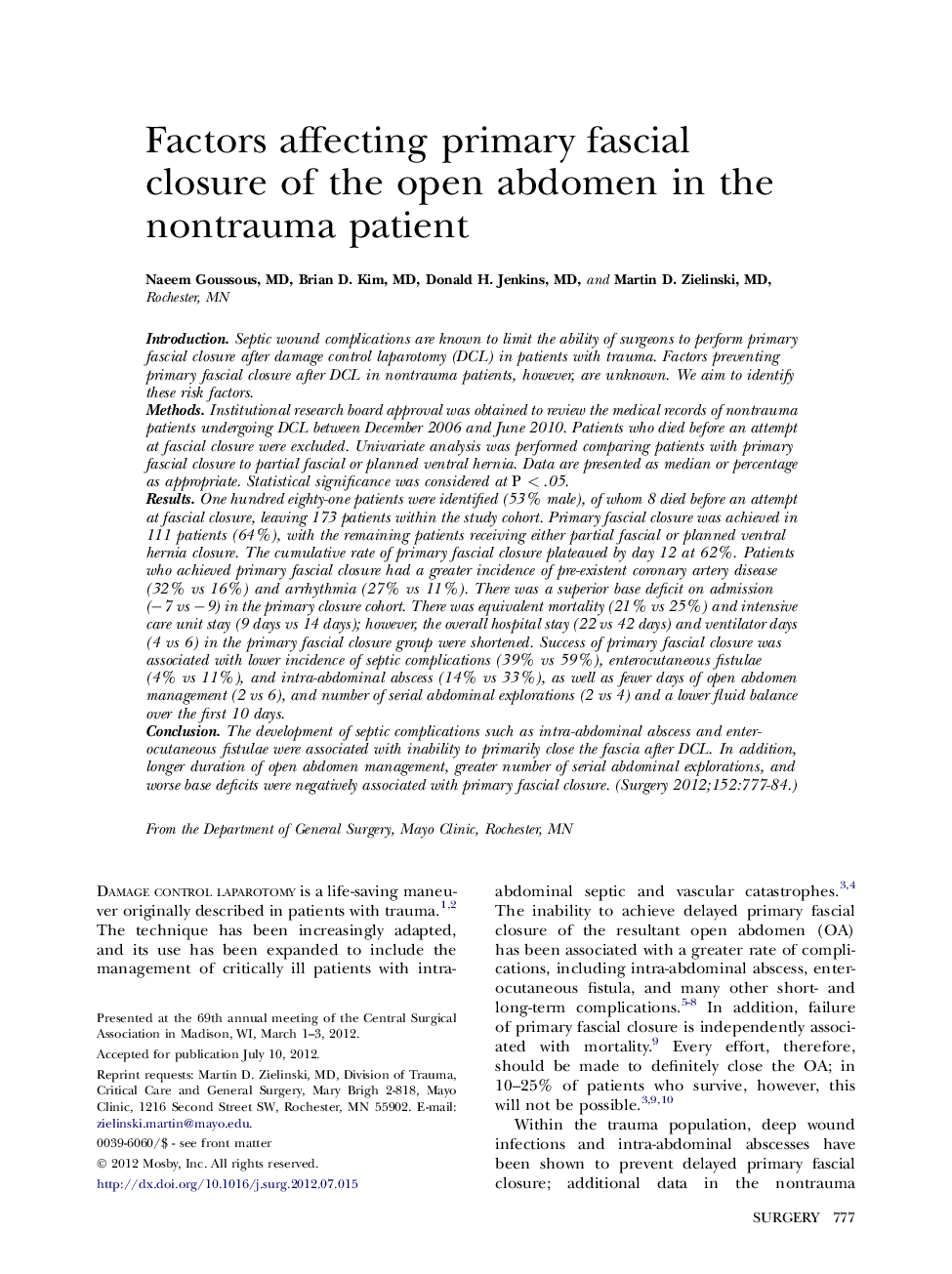| Article ID | Journal | Published Year | Pages | File Type |
|---|---|---|---|---|
| 4307846 | Surgery | 2012 | 8 Pages |
IntroductionSeptic wound complications are known to limit the ability of surgeons to perform primary fascial closure after damage control laparotomy (DCL) in patients with trauma. Factors preventing primary fascial closure after DCL in nontrauma patients, however, are unknown. We aim to identify these risk factors.MethodsInstitutional research board approval was obtained to review the medical records of nontrauma patients undergoing DCL between December 2006 and June 2010. Patients who died before an attempt at fascial closure were excluded. Univariate analysis was performed comparing patients with primary fascial closure to partial fascial or planned ventral hernia. Data are presented as median or percentage as appropriate. Statistical significance was considered at P < .05.ResultsOne hundred eighty-one patients were identified (53% male), of whom 8 died before an attempt at fascial closure, leaving 173 patients within the study cohort. Primary fascial closure was achieved in 111 patients (64%), with the remaining patients receiving either partial fascial or planned ventral hernia closure. The cumulative rate of primary fascial closure plateaued by day 12 at 62%. Patients who achieved primary fascial closure had a greater incidence of pre-existent coronary artery disease (32% vs 16%) and arrhythmia (27% vs 11%). There was a superior base deficit on admission (−7 vs −9) in the primary closure cohort. There was equivalent mortality (21% vs 25%) and intensive care unit stay (9 days vs 14 days); however, the overall hospital stay (22 vs 42 days) and ventilator days (4 vs 6) in the primary fascial closure group were shortened. Success of primary fascial closure was associated with lower incidence of septic complications (39% vs 59%), enterocutaneous fistulae (4% vs 11%), and intra-abdominal abscess (14% vs 33%), as well as fewer days of open abdomen management (2 vs 6), and number of serial abdominal explorations (2 vs 4) and a lower fluid balance over the first 10 days.ConclusionThe development of septic complications such as intra-abdominal abscess and enterocutaneous fistulae were associated with inability to primarily close the fascia after DCL. In addition, longer duration of open abdomen management, greater number of serial abdominal explorations, and worse base deficits were negatively associated with primary fascial closure.
